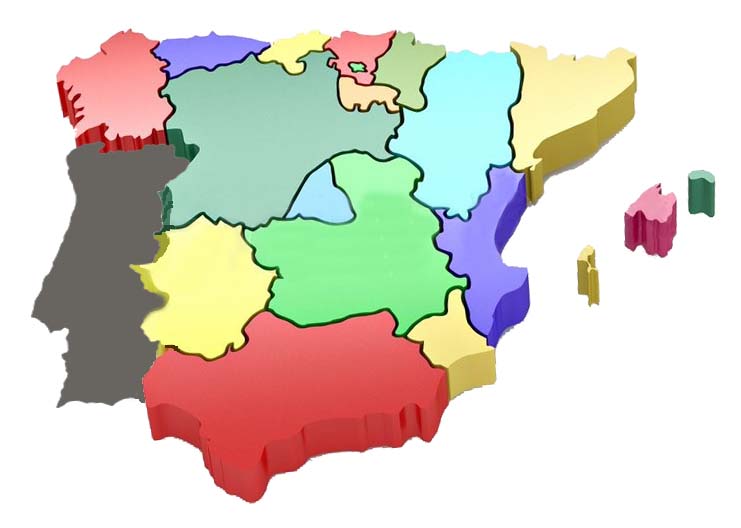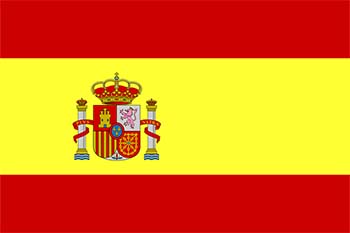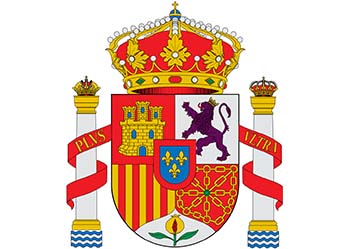
The Spanish regions and the Spanish flag

General information about Spain
The state of Spain was formed in 1479.
Their national day is October 12th.
The largest religion in the country is Roman Catholic Christianity.
The form of government in the country is constitutional monarchy and the present king is Felipe 6. (Felipe Juan Pablo Alfonso de Todos los Santos de Borbón and Grecia, born 30 January 1968 in Madrid).
The country’s currency is Euro and there are 220 V of power in the connectors, but English connectors needs an adapter to fit the contacts.
Spain covers an area of 504,782 km2 and there are approx. 46,770,462 residents in 2014
Average age is 79.2 years. The capital is Madrid
The international phone code is +34 and the international letter on Spanish cars is E.
The 17 largest cities in Spain and their population:
(1) Madrid 3.155.350 (2) Barcelona 1,603,889 (3) Valencia 796,549 (4) Sevilla 704,154 (5) Zaragoza 647.373 (6) Malaga 558.287 (7) Murcia 409.810 (8) Las Palmas de Gran Canaria 378,628 ) Palma de Mallorca 375,773 (10) Bilbao 353,173 (11) Alicante 322,673 (12) Cordoba 321.164 (13) Valladolid 321.001 (14) Vigo 300.035 (15) Gijón 280,560 (16) A Coruña 255,320 (17) Toledo 75,578
Spain consists of 17 regions (Spanish: comunidades autónomas), listed here with their capitals in alphabetical order:
(1) Andalusia (2) Aragon (Zaragoza) (3) Asturias (Oviedo) (4) Balearic Islands (Palma de Mallorca) (5) Basque Country (Vitoria) (6) Cantabria (Santander) (7) Castile-La Mancha Toledo) (8) Castile and Leon (Valladolid) (9) Catalonia (Barcelona) (10) Extremadura (Mérida) (11) Galicia (Santiago de Compostela) (12) Canary Islands (Santa Cruz de Tenerife and Las Palmas de Gran Canaria ) (13) La Rioja (Logroño) (14) Madrid (15) Murcia (Murcia) (16) Navarre (Pamplona) (17) Valencia (Valencia)

The Spanish coat of arms